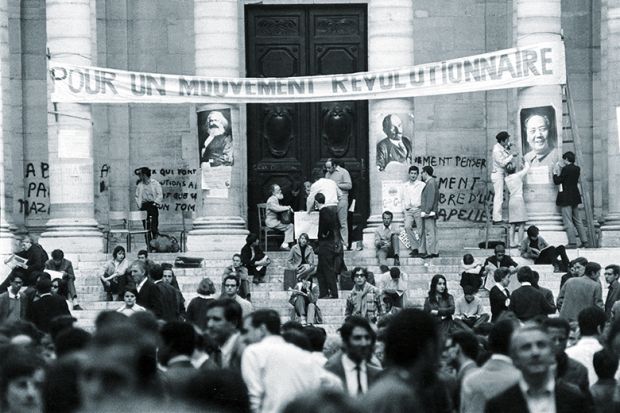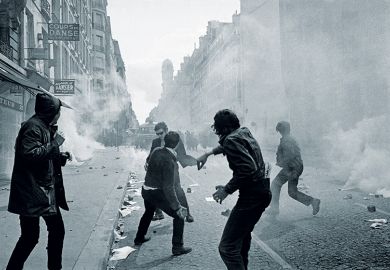Titles can be misleading. Going to College in the Sixties suggests an account of the experience of protests, revolutionary politics and the counterculture. The cover suggests this, showing students holding signs that say “I oppose this war” and “Get Out of Vietnam”. The gerund in the title creates the feeling that the book will be a narrative about the experience of “going” to college. The blurbs promise a “trip down memory lane” and “riveting firsthand stories”.
As a baby boomer who attended Columbia University during the upheavals of 1968, I was excited to read this book. My experience of occupying the buildings, getting arrested and watching the Grateful Dead play on my campus in support of the striking students seemed to make me the implied reader of this book.
However, the volume isn’t what it claims to be. A more accurate title would be “a brief study of higher education in the 1960s”. It is more concerned with issues such as high school as a feeder for colleges, the importance of the development of college testing, and the change in universities from academic islands of research to corporate conglomerates connected to “the knowledge industry”. The major players are executives and college presidents who steer that industry towards the kinds of campuses we now recognise as part of a neoliberal system. Of lesser importance are the student activists, who take up one limited chapter, with a bit on female students and barely one page on students of colour.
With regard to the students, John Thelin sounds a repeated theme. Rather than considering them as involved in a political sea change, he emphasises that the vast majority were apolitical; that the era of turmoil in essence failed to make major changes in the US landscape; and that the major changes occurred from the top of the university system down.
This account will strike a discordant note with those of us who were involved in the daily politics of the era. While many students may have been apolitical, this is true for any large population. History shows us that the tail often wags the dog, and that vanguard groups can propel social and political change by radicalising the moment and moving the intransigent majority towards reimagining the ideological terrain.
But while one can make this argument against the book, its value lies in its description of how higher education changed. Thelin does a nice job of showing us the dramatic increase in the size of universities, their devotion to building new buildings, creating satellite campuses within each state, and dealing with the vastly expanded population of baby boomers. Also fascinating is the creation and deployment of college testing services, which many of us took for granted as a natural feature of the admissions landscape without considering the financial, theoretical and reductionist premises that were by and large sold to admissions offices. A final chapter on changes in the curriculum highlights the efforts of students and faculty to dethrone the large lecture hall and provide smaller, more intimate spaces for learning.
If you prefer a study of higher education to a dive into the culture and ideology of the 1960s, then this is the book for you. Less about the narratives of individual lives, the book provides, as Dr Johnson put it, “observation with extensive view”.
Lennard Davis is distinguished professor of English at the University of Illinois at Chicago.
Going to College in the Sixties
By John R. Thelin
Johns Hopkins University Press
224pp, £26.00
ISBN 9781421426815
Published 10 January 2019
POSTSCRIPT:
Print headline: Changing system, changing times
Register to continue
Why register?
- Registration is free and only takes a moment
- Once registered, you can read 3 articles a month
- Sign up for our newsletter
Subscribe
Or subscribe for unlimited access to:
- Unlimited access to news, views, insights & reviews
- Digital editions
- Digital access to THE’s university and college rankings analysis
Already registered or a current subscriber? Login







